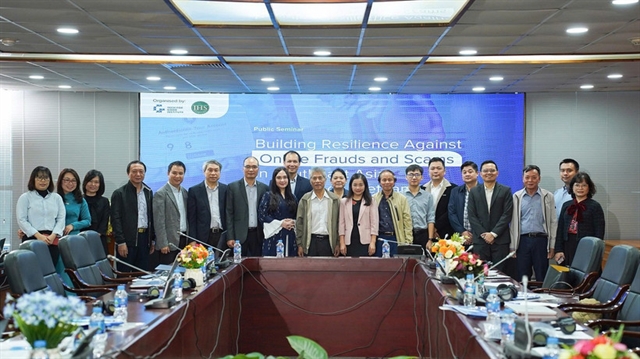 Media-OutReach Newswire
Media-OutReach Newswire

HONG KONG, CHINA - MediaOutReach - 18September 2018 - Our world is becoming flat, andmoving abroad for better opportunities is increasingly common for people.However, when people choose to move to another country, will they give up theirown cultural identities and thus assimilate into one single culture in the newcountry, or will they remain their own culture traits by congregating togetheras a way of finding support in a new land?
The answer is the latter, according toa study conducted by Prof. Maggie Rong Hu, Assistant Professor of School of Hoteland Tourism Management and Department of Finance at The Chinese University ofHong Kong (CUHK) Business School and her collaborator Dr. Adrian D. Lee fromthe University of Technology Sydney. The study indicates that Sydney'snewcomers are more likely to choose properties located in neighborhoods thatare more culturally similar to their own culture of origin. They are alsowilling to pay a price premium for properties in locations with shortercultural distance.
And among those newcomers, people from East Asia,particularly Chinese, are most likely to choose to live in a community, whichis closer to their culture of origin and more willing to pay higher prices forhouses in such neighborhoods.
"In our study, we find that anindividual's cultural background is indeed an important factor on housingprices," says Prof. Hu.
According to Prof. Hu, globalisation promotes the integration ofsocieties and has provided millions of people with new opportunities. As aresult, megacities with culturally diverse residents, such as Sydney, London,Los Angeles and Toronto, are becoming the new norm, yet little is known abouthow the interaction between these people and their host country's cultureaffects their personal and financial decisions, particularly in housingmarkets.
As such, their working paper "MeltingPot or Salad Bowl: Cultural Distance and Housing Investments" examined whether the culturalbackground of property investors and cultural differences of the neighborhoodsinfluence their housing buying decisions, in terms of location and price.
In the paper, the 'melting pot' metaphor describes the fusion of variousreligious sects, nationalities, and ethnic groups into one distinct people,while 'salad bowl' describes different ethnic groups, rather than assimilating,retain and coexist in their separate identities, just like the differentingredients in a salad.
"We would like to find out in a city with diverse culture, whetherthe 'melting pot' theory dominants or the 'salad bowl' analogy holds true. Inother words, whether the different ingredients are all mixed together to makeone dish or each ingredient also retains its own characteristics in the bowl,"she says.
The Study
For the purpose of the study, the researchers targeted Sydney, Australia'slargest and most culturally diverse city, where immigrants have made up a largecomponent of its population. According to the statistics from 2011 AustralianBureau of Statistics Census, 57 percent of Sydney urban respondents arenon-Australian or British origins.
The study looked at individual housing transaction data of the SydneyMetropolitan Area from 2006 to 2013 from Australian Property Monitors, one ofthe Australia's leading national suppliers of online property price informationto banks, financial markets, professional real estate agents and consumers. Thedataset includes the transaction price, transaction date, property address,buyer and seller names, and relevant housing characteristics.
In addition, the researchers also utilised the data in 2006 and 2011from the Australian Bureau of Statistics Census, namely the demographics of asuburb, to examine the ethnic composition in Sydney. The data shows thatSydney's top five ethnicity groups in 2011 are Australian, Chinese, Irish,Italian and Arabic.
Then, they introduced a term 'culture distance' to gauge the culturaldifference between a housing buyer's culture of origin and the culture ofneighborhood of a property. They calculated the cultural distance by adoptingthe six-dimension culture framework introduced by Professor Geert Hofstede,which is widely used in social science research.
In this framework, a score on the scale of 0 to 100 is assigned to eachcountry along six dimensions: uncertainty avoidance, individualism, powerdistance, masculinity, long-term orientation and indulgence.
For example, Australia and China differ significantly on severaldimensions, particularly on individualism and long-term orientation, accordingto Hofstede (2001).
Using a complex mathematical formula, the researchers reveal that theaverage cultural distance score over the entire sample is 1.99. Naturally,Australian investors have the lowest average cultural distance score of 1.35across all ethnic groups. The average cultural distance score for Chinesehomebuyers is 2.50. The higher the score on the cultural distance measure, thegreater the cultural difference between a buyer and a neighborhood.
So how does cultural distance between the homebuyers and theneighborhood influence home buying decisions?
Cultural Distance Sensitivity
As expected, the study finds that cultural distance is an important determinantof property investors' location choice and transaction price.
To be specific, housing buyers are more likely to choose propertieslocated in neighborhoods that are more culturally similar to their own cultureof origin. And they are more willing to pay a higher price for properties inlocations with shorter cultural distance.
In other words, there is a negative relationship between culturaldistance and housing price. The greater the cultural distance between ahomebuyer and a neighborhood, the lower the housing price is in thetransaction.
According to the study, if the cultural distance between a homebuyer andthe suburb decreased by 1 unit, which is approximately the difference betweenthe average Australian and average Chinese property buyers' cultural distancein the sample, housing price rises by 1.1 percent or AUD$7,382.
Asians and Home Culture Preference
What's more interesting, the study reveals that home investors fromdifferent ethnic groups display varying degrees of home culture preference.
"Investors from Asia display a greater degree of home culturepreference, compared with European and Australian buyers. Particularly, Chineseare most likely to pay higher prices for houses in neighborhoods which arecloser to Chinese culture," Prof. Hu points out.
The study shows that if the cultural distance between an Asian propertyinvestor and the neighborhood decreased by 1 unit, the housing price increaseabout 2 to 4 percent, whereas the effect is only about 1.3 percent for Europehousing investors.
Why is that the case? According to Prof. Hu, people from Asiancountries, such as China, India, Malaysia, The Philippines and Vietnam, aremore recent migrants into Australia, and thus have stronger cultural bonds withtheir countries of origin, and may display stronger home culture preference.
However, Europeans came to Australia relatively earlier compared withAsian immigrants and their cultural difference is relatively smaller, so theyare better adapted to the local Australian society and their ties to theircountries of origin are weaker.
"Cultural distance sensitivity or home culture preference is weakerfor more established ethnic groups than recent migrants," says Prof. Hu.
It is worth noting that China has become one of the top sources ofimmigrants to Australia in recent years and there is a huge new wave of Chineseinvestment into the Australian property market. Their appetite for thecountry's properties grows quickly.
According to TheNew York Times, Chinese investment in Australian real estate has increased at leasttenfold since 2010; Chinese investors have purchased up to half the newapartments in downtown Sydney.
Policy Implications
As the study suggests homebuyers are willing to pay a premium forculture proximity, Prof. Hu believes that it has important policy implicationson social diversity and urban planning.
Recognition of foreign migrant's inherent desire for culturalpreservation is the first step towards a better understanding of foreignmigrants and local communities, according to her.
"Awareness and respect for the housing investment preference ofdifferent ethnic groups would facilitate efficient urban planning," shesays.
"We document the natural occurrence of cultural and racial segregationthrough individuals' housing investment decisions in Sydney. And we believethat a similar phenomenon could be observed in other migrant cities withdiverse culture, such as San Francisco, Toronto or Vancouver," Prof. Huconcludes.
Reference:
Hu, Maggie Rong and Lee, Adrian D., Melting Pot or Salad Bowl: CulturalDistance and Housing Investments (August 31,2017). 28th Australasian Finance and Banking Conference.
This article was first published in the ChinaBusiness Knowledge (CBK) website by CUHK Business School: https://bit.ly/2p8340a.
About CUHK Business School
CUHKBusiness School comprises two schools -- Accountancy and Hotel and Tourism Management -- andfour departments -- Decision Sciences and Managerial Economics, Finance, Management and Marketing.Established in Hong Kong in 1963, it is the first business school to offer BBA,MBA and Executive MBA programmes in the region. Today, the School offers 8 undergraduate programmes and20graduate programmes including MBA, EMBA, Master, MSc, MPhiland Ph.D.
Inthe Financial Times GlobalMBA Ranking2018, CUHK MBAis ranked 43rd. In FT's2017 EMBAranking, CUHK EMBA isranked 32nd in the world. CUHK Business School hasthe largest number of business alumni (35,000+) amonguniversities/business schools in Hong Kong -- many of whom are key businessleaders. The School currently has about 4,400 undergraduate andpostgraduate students and Professor Kalok Chan is the Dean of CUHK BusinessSchool.
More information is available at www.bschool.cuhk.edu.hkor by connecting with CUHK Business Schoolon Facebook: www.facebook.com/cuhkbschooland LinkedIn: www.linkedin.com/school/3923680/.




